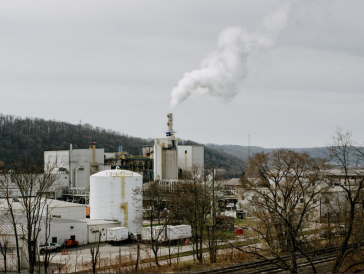
Aqueous film-forming foams (AFFF) have been used for decades to combat chemical and oil fires. However, these PFAS containing firefighting foams can leach into the ground water, which may expose local communities to these forever chemicals through drinking water wells. Over 600 military sites have been identified as a source of PFAS contamination and as the U.S. Department of Defense steps away from the use of AFFF, it’s faced with the challenge of disposing a stockpile of foam that can no longer be used. The primary options for disposing of PFAS-containing materials are to bury them in a landfill or to incinerate them, which has become increasingly controversial.
Water contamination from PFAS is a well-known exposure route, and now communities in several states fear the chemicals could be in the air as well. The U.S. Environmental Protection Agency said that incinerating PFAS “is not well understood” and that it is studying the process. Some experts worry that incomplete combustion could release toxic chemicals into the air.
The Department of Defense has contracts with hazardous-waste incinerators in a number of states, including Ohio, New York and Arkansas, to dispose of more than two million gallons of unused foam. Heritage Thermal Services, in East Liverpool, Ohio, reported in 2019 that it burned 3,750 tons of materials potentially containing PFAS over the previous three years, which has raised concern among nearby communities of potential PFAS exposure through the air. Earthjustice, an environmental group, has filed a lawsuit against the Department of Defense, the Defense Logistics Agency, and two waste-disposal companies, urging the court to void the contracts and stop the incineration. They argue that the process is dangerous and poorly understood.
Heritage Thermal Services stated that it operates within federal law and that testing to ensure that PFAS are destroyed without creating byproducts is unnecessary. Meanwhile a facility in Cohoes, New York, said last month that it will stop burning PFAS-containing firefighting foam, and wouldn’t resume burning the foam until research by the EPA shows that incineration is the safest and most effective method of disposal for PFAS-containing material.

